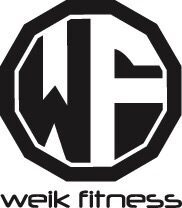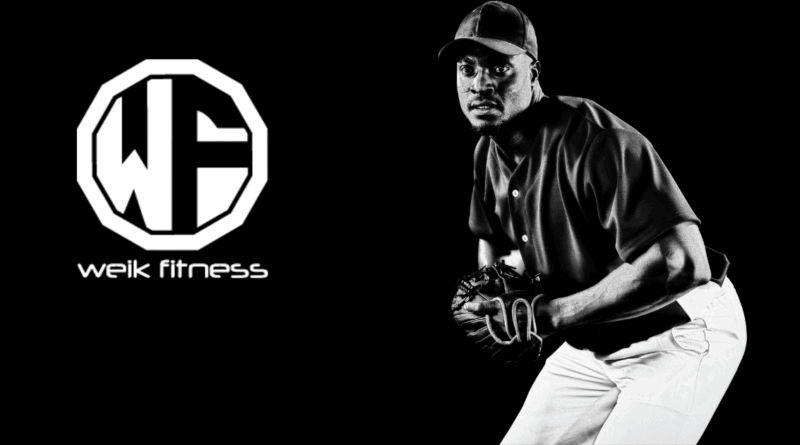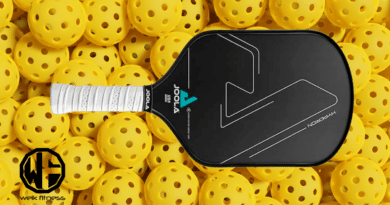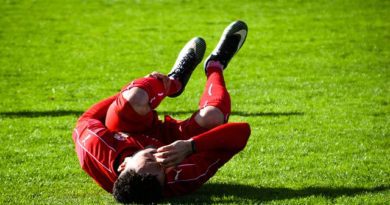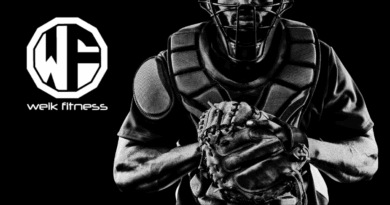How Baseball Players Can Improve Reaction Speed
Think your reaction speed is good enough? Think again.
Fast plays punish slow reactions. The faster you can perceive a play, the better. Baseball gives you only a blink to see, decide, and move. Training your brain and body tightens that window, so you react faster and with more control.
The average adult reaction time sits around 200 to 250 milliseconds. That tiny gap decides if a swing starts on time or a throw beats the runner.
There are many things that affect baesball reaction time. If you want to improve reaction speed and react quickly and accurately, we have the information you need. In this guide, we are going to break down how you can increase your reaction time, which is essential for peak performance.
An athletes’ response to a stimulus can mean the difference between an out, hitting the game-winning run, or going home with an “L” in the standings. Use the steps below to sharpen focus, speed up decisions, and turn close plays into wins.
Disclaimer: This article is for informational purposes only and is not meant to treat or diagnose any condition. It is recommended that you speak with your doctor before starting any exercise program, changing your daily nutrition, or adding any supplements to your regimen.
Table of contents
- Why Is Reaction Time Crucial for Baseball Players?
- Key Factors That Impact Reaction Speed in Baseball
- Techniques to Improve Your Baseball Reaction Time
- Physical Exercises to Boost Reaction Time and Improve Response Times
- Cognitive Strategies to Accelerate Reaction Speed
- Essential Tools for Baseball Reaction Time Improvement
- Optimizing Reaction Speed through Visual and Auditory Stimuli
- Integrating Reaction Training into Baseball Practice
- Common Errors in Reaction Training and How to Avoid Them
- Advantages of Enhanced Reaction Speed for Baseball Players
- Examples of Exceptional Reaction Time in Baseball
- Improving Human Reaction Time and Response Time are Key for Baseball Players
- Reaction Speed & Reaction Time FAQs
- Reaction Speed & Reaction Time References
Key Takeaways
- The average reaction time is 200 to 250 milliseconds. Faster reactions help you handle high velocity pitches and tough plays to gain a competitive edge.
- Hydration and balanced nutrition, including omega-3 fats, support brain and muscle function. Agility work and plyometric moves also shorten response time.
- Tools such as FITLIGHT, stroboscopic glasses, BlazePod, and cognitive apps improve hand-eye coordination and visual response in a few weeks.
- Action video games can cut reflex time by 100 to 150 milliseconds compared with non-gamers. Memory tools like NeuroTracker raise focus in about 30 days.
- Use smart lights, sound cues, sprints, and steady sleep habits to track progress toward elite reaction speed in sport.
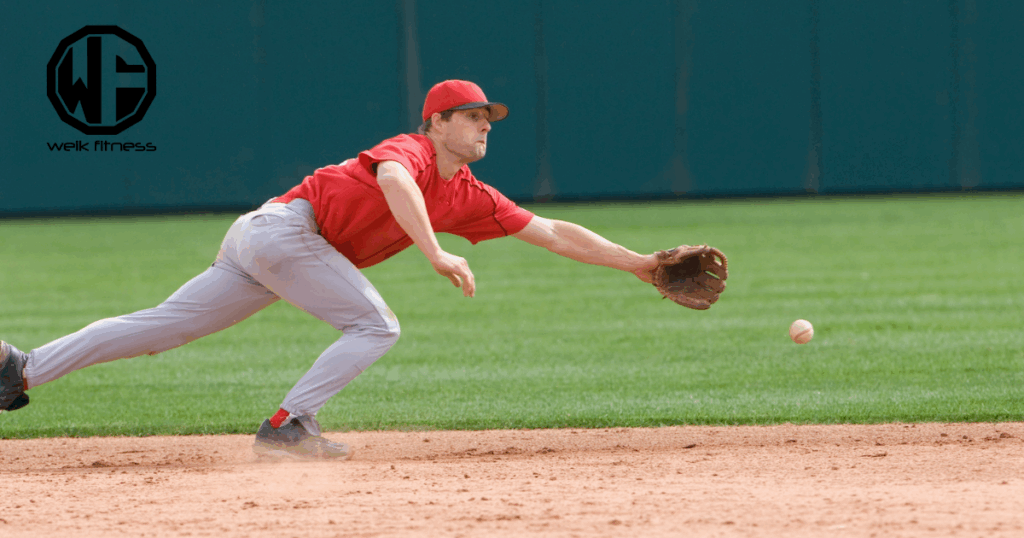
Why Is Reaction Time Crucial for Baseball Players?
Hitters get roughly one-third of a second to choose swing or take. That demands sharp eyes, quick decisions, and smooth movement. Vision skills and reflexes must be ready every pitch.
Every spot on the field needs quick choices. Outfield jumps, catcher blocks, and middle infield turns all reward quick starts. Faster reaction time helps you read spin, track liners, and smother wild pitches before they hurt your team.
A split second can be the difference between striking out and hitting a home run.
Pressure moments are common, like a close play at third or a double play turn. Good reaction training makes those moments feel calmer and more controllable. Tools such as flashing lights and agility drills let you test, measure, and improve against average human reaction benchmarks.
Raise response speed through targeted work. Each play then feels less rushed, more precise, and more effective.
As a youth baseball coach, certified strength coach, and sports nutritionist, I’ve worked with many athletes from little league all the way up to my MLB clients.
Reaction speed is something many baseball players don’t put enough focus on, and they’re miss a key element to gain a competitive advantage. Proper training of reflexive reactions can change their game quickly.
Key Factors That Impact Reaction Speed in Baseball
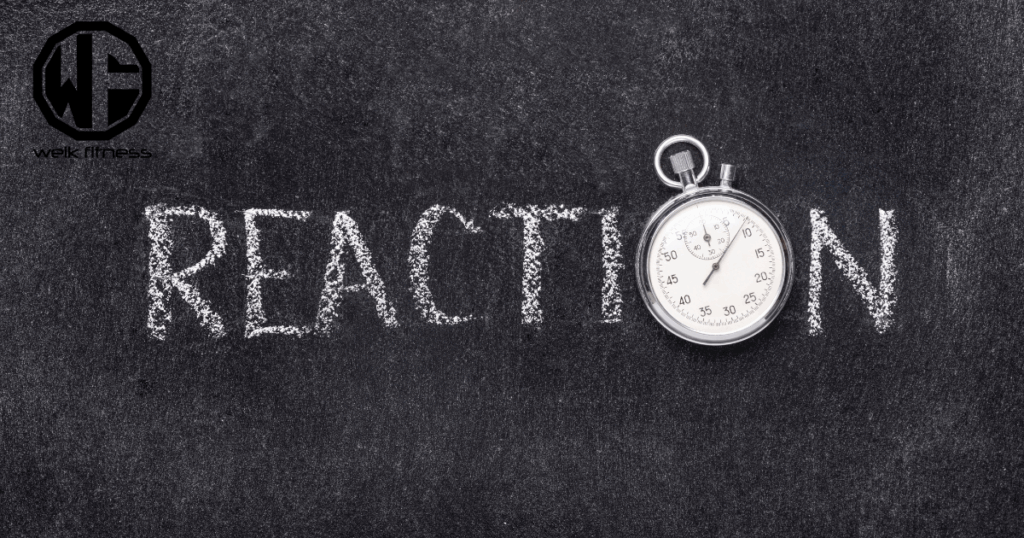
Many forces shape how fast you react. Muscle strength, alertness, and decision skills all matter. Understanding these factors helps you train smarter and respond faster to pitches and batted balls.
How Do Hydration and Nutrition Affect Average Reaction Speed?
Hydration keeps baseball reaction speed sharp. Even mild dehydration slows your response to a stimulus, which hurts play recognition and timing. Cramps and fatigue grow when fluids drop, and reflex drills suffer, especially in heat.
RELATED: Baseball Nutrition Guide — What Should Baseball Players Eat?
Food choices also matter. Carbohydrates give quick energy for explosive plays. Omega-3 fats in salmon or walnuts support brain function, which helps human reaction time and focus. Hydrate before, during, and after practice. Small steps here add up to faster reactions and safer training.
What Role Does Physical Fitness Play in Baseball Reaction Speed?
Fitness drives speed, balance, and precision. Strong muscles, flexible joints, and stable cores help you move quickly and under control. Ladder drills and cone work improve footwork, which shortens the time between seeing a cue and moving to it.
Better conditioning increases blood flow and nerve signaling. That keeps you alert when a ball leaves the bat. Research shows fitness training also improves focus. As the mind-body link strengthens, you process a stimulus faster and act with less delay.
How Does Mental Focus Influence Baseball Reaction Speed?
Strong focus speeds up visual attention. You process key details faster and reduce noise. This helps you react to a fastball or tricky hop with speed and precision.
Visualization and simple mindfulness drills improve focus under stress. Tools like reaction training lights and cognitive training programs build awareness and shorten response time.
Studies link mental skills to better performance in stressful games. As focus sharpens, motor control improves. You decide faster and move cleaner, both at the plate and in the field.
“Focus turns practice into peak performance.” — Dr. John Sullivan, sports psychologist for professional athletes.
Staying present lets you process each pitch as it happens. The result is one of the fastest reactions on the field.
What Challenges Does Stimulus Complexity Present?
Pitches vary in speed and location. Each change adds processing steps for your brain. More complex visual stimuli increase decision time and can slow movement.
Baseball rewards quick decisions. Complex looks force you to choose among more options, which can increase time taken.
Reaction training boards and stroboscopic glasses teach your sensorimotor system to handle complex changes. With repetition, actions become automatic.
That shift shortens the gap between seeing and moving, which helps in baseball’s fastest moments.
Techniques to Improve Your Baseball Reaction Time
Training can speed up reflexes, focus, and decision-making. Smart tools, like light systems and ladders, bring game speed into practice and make drills engaging.
How Can Targeted Reflex Training Help Influence Reaction Time?
Targeted reflex training focuses on specific skills that boost game reactions. Modern systems and field drills train your brain to pick up cues faster and move with purpose.
- Fielding drills to different spots raise agility and hand speed for unpredictable plays.
- Game speed simulations train cue recognition, so you react faster to real pitching and liners.
- Studies show focused reflex work can cut reaction time by more than 10 percent.
- Light-based tests and boards strengthen neural pathways for faster visual processing.
- Partner drills build pressure tolerance, so real games feel slower and clearer.
- Bertec systems help you measure, compare, and track progress over sessions.
- Auditory cues raise focus and spatial awareness during baseball situations.
- Consistent work helps you field grounders faster and complete tougher defensive plays.
Use these methods to enhance quick thinking and responsiveness. Coaches value players who think fast and act with precision.
What Are Effective Agility Drills for Reaction Time?
Agility drills that blend physical movement with fast cues make a big difference. You will learn to accelerate, stop, and change direction in one smooth motion.
- Try the Reactive Gear Drill to build first-step quickness from sound or light cues.
- Use the Reactive Sprint and Backpedal Drill to switch direction instantly on a coach signal.
- Run the Wave Drill with colored cones or hand signs to sharpen visual cue reactions.
- Shuffle Reaction Ball Drills build lateral speed and hand-eye coordination.
- Ball Drops Drills train fast visual responses and quick burst speed.
- Adapt each drill to your current level and raise difficulty gradually.
- Mix sound, light, and touch cues. Studies suggest sensorimotor speed can rise 10 percent over several weeks.
Baseball demands quick starts and fast choices. These drills build both, so you make an impact on every play.
How Do Cognitive Training Programs Help You React Faster?
Cognitive training targets the brain’s speed and accuracy. These workouts strengthen how you see, decide, and respond under pressure.
- Mental drills build neural pathways, which supports quick reactions to fast plays.
- Neuroplasticity means the brain adapts. You get quicker at reading visual cues.
- Reflexion uses decision tasks that mimic baseball moments to improve choices under stress.
- Apps track reaction test results, so you can see gains over time.
- Focus games teach you to block distractions during each pitch or play.
- Simulations copy real situations. You practice fast choices without game-day risk.
- Memory and focus games force snap judgments, which support elite reflexes.
Use these science-based tools to close the gap to the fastest human reaction time. Every millisecond counts.
How Are Reaction Training Lights Used Effectively?
Reaction training lights improve visual reaction times and attention. They challenge your eyes, brain, and hands to work together at real speed.
- LED systems like FITLIGHT can be used to build eye-hand coordination for hitting and defense.
- Set drills with moving targets that match pitch speed or ball paths for game-like complexity.
- Track multiple colors while keeping primary focus. That raises peripheral awareness for fielding and steals.
- Reduce intervals between flashes over time. This adapts you to faster games and lowers response time.
- Add partner control of the light sequence to keep drills unpredictable.
- Record scores after sessions. Aim for steady weekly gains toward elite benchmarks.
- Train in bright and dim settings. Stadium light varies across a season.
- Combine lights with sound cues to challenge pitch recognition and defensive alerts.
- Include things like FITLIGHT in team workouts to build anticipation, memory, and fast decisions.
These sessions make reactions quicker at hot corners and busy spots. Tough hops and sharp liners start to feel routine.
Physical Exercises to Boost Reaction Time and Improve Response Times
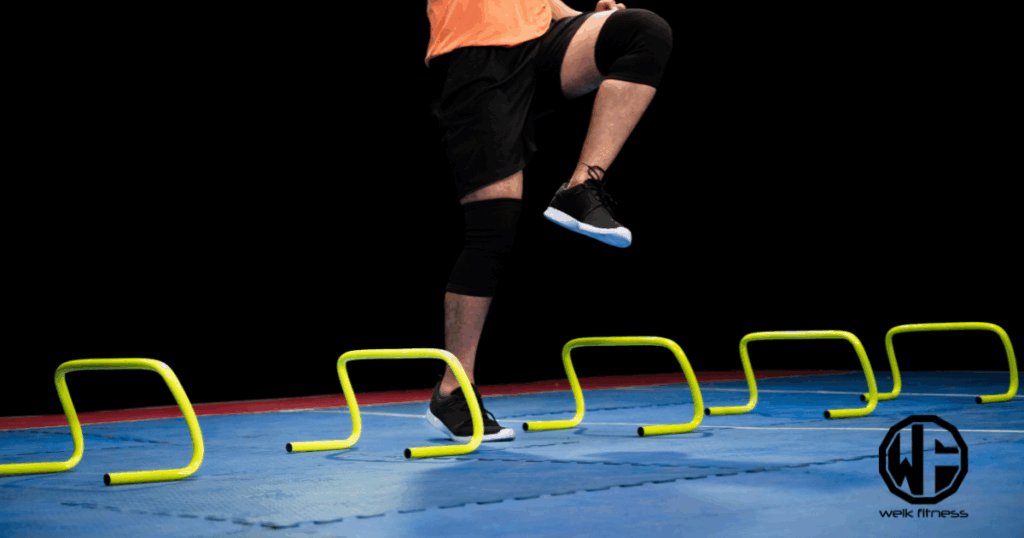
Sprint work, plyometrics, and hand-eye drills turn speed into timely action. Use these proven methods to build faster responses on the field.
How Can Sprint Drills Improve Baseball Reaction Speed?
Sprint drills train the eyes, brain, and legs to fire together. The goal is a fast cue read and a powerful first step.
- Start sprints from visual or auditory cues to mimic baseball decisions.
- Run the Reactive Gear Drill to sharpen first-step speed and pace control.
- Use the Sprint and Backpedal Drill to accelerate, stop, and change direction instantly.
- Try the Wave Drill to react to coach signals during live play.
- Shuffle with a reaction ball to build lateral speed and tracking ability.
- Use Ball Drops to train stalk, read, and burst skills.
- SAQ training improves sprinting and change of direction, which is vital on the diamond.
- Mix cues from sound, light, and touch to improve reactions in many game scenarios.
- Repeat often to build muscle memory. Fast choices become automatic over time.
What Are Plyometric Workouts and Their Benefits?
Plyometrics are explosive moves. They use a stretch-shortening cycle, where a muscle quickly lengthens, then fires hard. This builds power you can use in swings and throws.
Common moves include box jumps, jump squats, medicine ball slams, and lateral bounds. Simple tools work well, like a sturdy box or a medicine ball. An 8-week plan can raise strength, agility, and running speed in baseball players.
RELATED: Best Baseball Workouts — Strength Training & Exercises
Plyometrics also improve neuromuscular control, which is the brain and muscle working as one. That improves starts off the base and first steps to the ball. Keep great form, increase gradually, and rest between sets to reduce injury risk.
How Do Hand-Eye Coordination Drills Enhance Reaction?
Hand-eye drills connect what you see with how you move. Better connection equals quicker decisions and cleaner plays.
- Throw a reaction ball at a wall. Irregular bounces force quick adjustments.
- Use stroboscopic glasses to challenge visual processing and ball tracking.
- Train with colored lights to speed cue detection and pitch recognition.
- Track bat-and-ball with a partner to judge speed and movement earlier.
- Catch small balls one-handed to link focus with fast muscle action.
- Call out colors or numbers while catching to train mind and body together.
- Steady practice brings faster defensive reactions and smarter steals.
- Add short memory tasks during drills to handle pressure better.
- Use mobile apps for feedback on reaction speeds and trends.
- Consistent work builds earlier anticipation at the plate and in the field.
These drills stack small gains into big changes. Each rep strengthens the link between eyes and hands.
Cognitive Strategies to Accelerate Reaction Speed
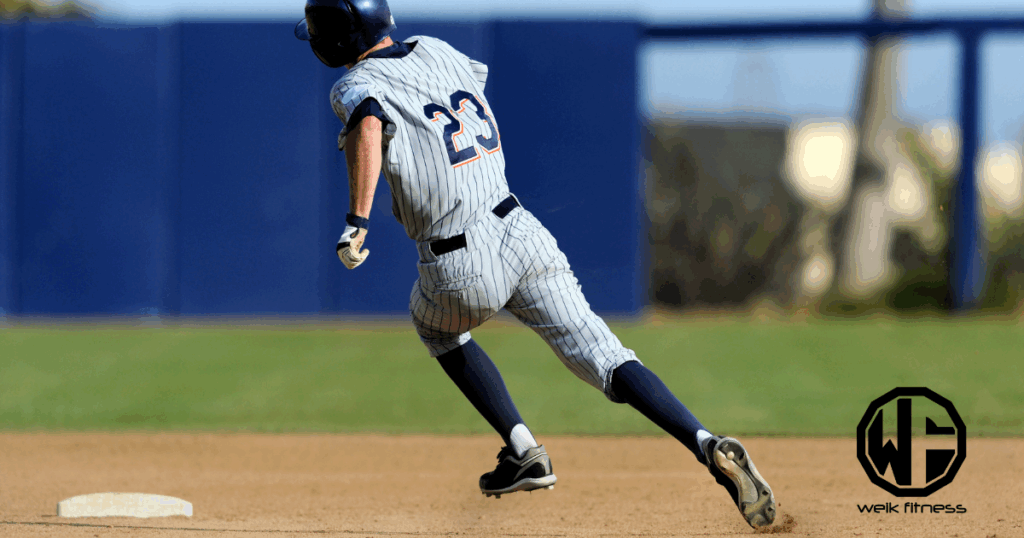
The brain can get faster with practice. Short, focused exercises build memory, attention, and decision speed, which carry straight onto the field.
Can Video Games Improve Reflexes for Baseball?
Action games demand fast choices and tight control. Expert gamers often react 100 to 150 milliseconds faster than non-gamers. Even 30 minutes a day can improve focus and hand-eye coordination.
Research shows faster reaction speed without lost accuracy. Games can widen your field of view and support quick decisions under stress. That helps with tracking pitches, reading hops, and choosing the right play. Maybe grabbing that Xbox or PlayStation wasn’t such a bad idea for your kid after all, right?
What Memory and Focus Exercises Work Best?
Stronger memory and focus support fast choices. Here are simple ways to build both during normal training.
- Complete daily NeuroTracker sessions for six minutes. Many see better working memory and attention within 30 days.
- Practice number sequence recall. Increase length over time to sharpen short-term memory.
- Play quick concentration games that match cards or symbols under time pressure.
- Use visualization before games. Close your eyes, see a pitch, then choose your move.
- Breathe deeply for two minutes pre-practice to center attention and reduce noise.
- Do auditory reaction tasks. Respond on the spot to random claps or beeps.
- Use NeuroTracker’s free test tool to track processing speed and improvement.
These drills fit into team work without extra gear. Faster mind work supports faster body work.
How to Practice Quick Decision-Making Scenarios?
Fast decisions separate good from great. Build this skill with realistic, repeatable scenarios.
- Use Reflexion or similar platforms to simulate pitch reading and defensive shifts.
- Run computer drills that mirror live at-bats and fielding choices.
- Add focus work that trains inhibition. This cuts impulsive mistakes.
- Do partner drills with surprise throws or last-second commands.
- Juggle two balls under a clock. Decide which to catch first each rep.
- Run coach-led scenarios that change tactics on the fly, like real innings.
- Train anticipation. Read pitcher moves or runner cues to predict early.
- Use reaction apps that time the gap from cue to action and show trends.
- Blend mental tasks into physical drills. Switch strategies mid-rep as signals change.
- Keep these methods alongside skill work to sharpen swings, fielding, and steals.
Essential Tools for Baseball Reaction Time Improvement
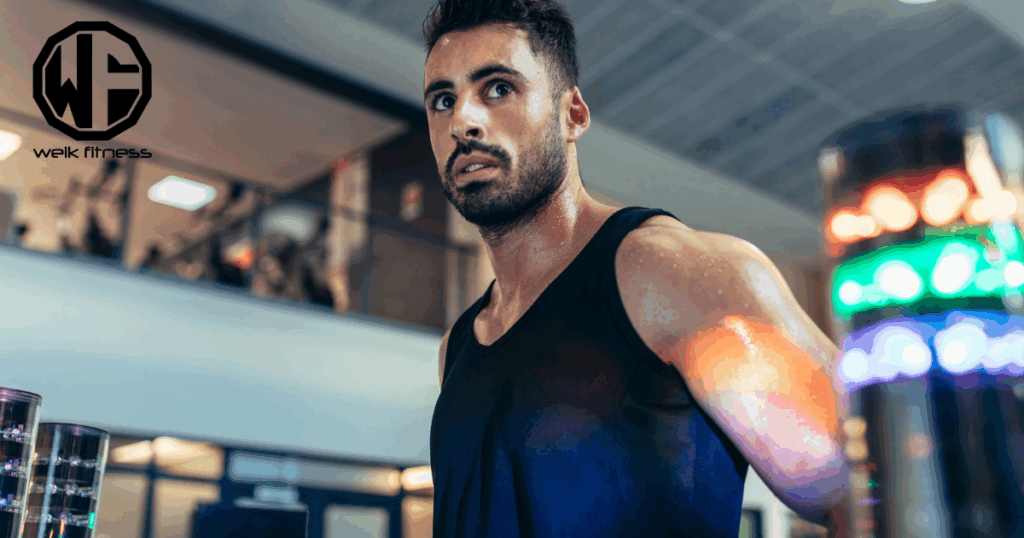
Stroboscopic goggles, reaction boards, and smart apps help you practice at true game speed. Pick tools that give fast feedback and track measurable gains.
How Do Stroboscopic Glasses Enhance Reaction?
Stroboscopic glasses flicker at set rates. Your brain must process less visual input each blink, which teaches faster recognition and prediction. Over time, hand-eye coordination and eye speed improve.
Many systems include mobile apps to set sport-specific patterns. These tools improve saccadic vision, which is rapid eye movement between targets. Players often see gains within weeks, including better pitch speed and spin reading during batting practice.
What Are the Best Reaction Speed Apps and Tools?
BlazePod is a leading smart light tool for baseball training. You can set custom drills and track results with built-in analytics. BlazePod Go is free, and BlazePod Pro is $12.99 per month for deeper data and more drills.
Other helpful tools include Reaction Light Pods, Reaction Balls, Agility Ladders, Hurdles, and Speed Cones.
Pison blends neuroscience with testing to assess player potential. These tools work at home or on the field. Expect faster choices and cleaner swings as you use them regularly.
How to Use Reaction Training Boards Effectively?
Start with simple board drills. Tap lights or targets fast and clean. Systems like FitLight and Senaptec build visual processing and athletic reaction time.
Raise complexity gradually, in line with Hick’s Law. Mix target colors or move locations to force quick recognition. Customize for your role. Hitters can simulate pitch patterns. Fielders can create random flashes like unpredictable grounders.
Sessions work best with good sleep, hydration, and nutrition. Short daily blocks, five to ten minutes, beat long weekly marathons. They keep focus high and reduce fatigue while you build durable habits.
Optimizing Reaction Speed through Visual and Auditory Stimuli
Training the eyes and ears together raises performance. Use strobe glasses, light boards, and sound cues to improve how you notice and act on game signals.
How to Improve Visual Reaction Time?
Visual reaction time is the gap between seeing and moving. Focused drills shrink that gap and lift game results.
- Use batting simulations and reaction balls to copy game patterns.
- Train with strobe glasses from Senaptec or Nike Vapor Strobe to challenge processing speed.
- Catch numbered balls in order to strengthen sequence processing and decisions.
- Use apps like FitLight Trainer for 15 minutes, three times per week.
- Fuel with greens, lean protein, and omega-3s to support eye-brain-muscle links.
- Do fast color-matching or puzzle tasks between pitches to build focus.
- Increase complexity over time, following Hick’s Law. More unpredictability builds faster processing.
- Prioritize sleep, about eight hours, to reinforce new neural connections.
- Add light systems to team work for competition and sharper reactions.
- Use partner cone or hand signal games to mimic sudden in-game changes.
Players in youth and college programs often see gains within weeks. Consistency is the key.
How to Boost Auditory Reflexes?
Sharp hearing supports fast starts and clean decisions. Sound cues often process faster than visual cues, so training ears pays off.
- Use whistles or claps during drills to train quick starts from sound.
- Try apps like Reaction Time Test or Cognifit during warmups.
- Combine light and sound cues to train complex game signals.
- Have a partner call random commands while you sprint, catch, or change direction.
- Jump rope or do plyometrics while listening for audio cues.
- Include dynamic visual tests, which can indirectly aid auditory reflexes.
- Use cognitive games with headphones to speed choice making. These can help athletes facing conditions like parkinson’s disease.
- Practice with crowd noise to keep focus in loud stadiums.
Steady practice with tech and simple drills builds powerful ear-to-action speed.
Integrating Reaction Training into Baseball Practice
Blend reaction tools into normal practice. Use lights, partner tosses, and quick decision tasks to raise speed without losing skill work.
What Are Effective Baseball-Specific Reaction Drills?
Drills that mirror real plays build trust in your instincts. Focus on eyes, feet, and decisions at game tempo.
- Juggle three tennis balls to sharpen focus and quick hands.
- Field unpredictable bounce grounders to speed up adjustments.
- Run fake-out partner drills to train anticipation of cues.
- Use agility ladders while responding to coach commands or color cards.
- Add Reflexion lights to simulate live decisions and measure gains.
- Catch rapid-fire short tosses barehanded to build tough defensive reflexes.
- Use strobe glasses or colored balls for advanced pitch tracking.
- Race steals off random sound cues to build auditory response and burst.
- Practice lead-off reactions against many pick-off moves.
- Hit off variable-speed machines to build timing across pitch ranges.
These drills grow reaction skills under real stress. They match the tiny margins that define elite play.
How to Design Simulated Game Scenarios?
Well-built simulations teach fast choices under pressure. Use video, VR, and live cues to copy real baseball chaos.
- Start with clips or data from recent games. Mirror counts, outs, and traffic on bases.
- Use VR tools like WIN Reality or a VR headset to recreate hitting and fielding looks.
- Change pace and add surprises like bunts, pick-offs, or liners.
- Target each position. Pitchers handle jams. Outfielders track deep balls in the wind.
- Set clear goals. For example, complete a double play in seconds or call pitch type from partial cues.
- Pair light cues with Reflexion Edge to simulate pitch types. Track results across sets.
- Include teammates. Group sessions better match live game chaos.
- Log results weekly with app dashboards or coach notes for trend lines.
Over several weeks, many players read breaking balls sooner. That can boost both offense and defense.
How Can Partner-Assisted Reflex Drills Help?
Partners add unpredictability and pressure, which is ideal for game prep. You learn to react to real human cues and speed.
- Improve hand-eye coordination with varied toss speeds and angles.
- Keep drills fresh with unexpected actions to raise engagement and growth.
- Build anticipation and quick choices with shared cognition tasks.
- Respond to finger snaps or glove taps to speed habit formation.
- Scale difficulty with speed, distance, or new cues for each position.
- Develop fast talk during reps, which strengthens teamwork in live plays.
- Use FitLights or reaction balls for split-second visual challenges.
- Blend footwork, decisions, and timing into baseball-specific movements.
- Consistent partner work cements fast habits for line drives, tags, and bunts.
Common Errors in Reaction Training and How to Avoid Them
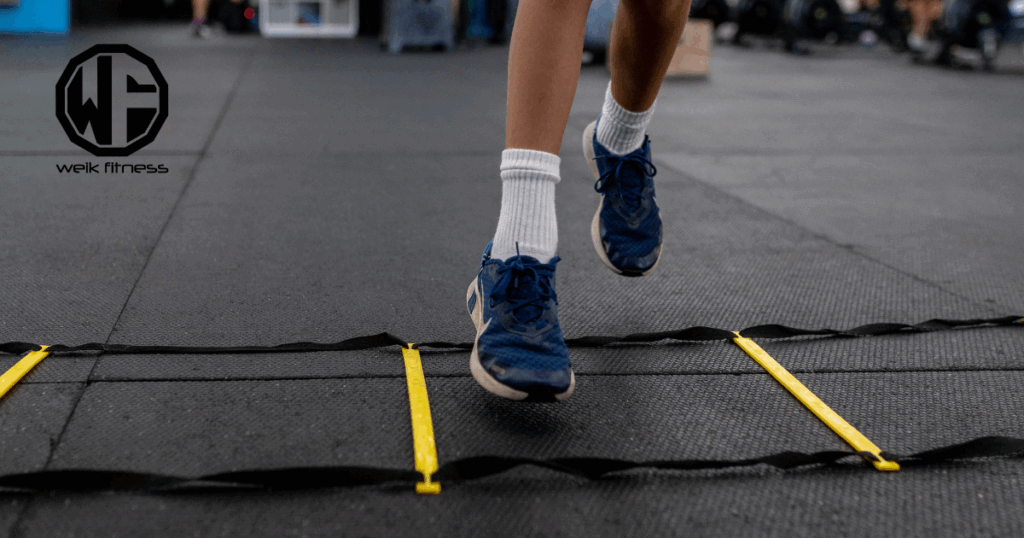
Many athletes train hard but stall out. Avoid fatigue traps, poor form, and unbalanced plans that limit progress and raise injury risk.
Why Is Rest and Recovery Important in Reaction Training?
Fatigue slows baseball reaction time, lowers bat speed, and increases mistakes. Hard drills cause tiny muscle damage, which needs sleep and fuel to repair. Sleep also restores glycogen, your quick energy store.
Active recovery keeps blood moving and reduces soreness from ladders, lights, and hand-eye work. Good nutrition and hydration support focus and reduce injury risk. Mental breaks also help decision speed during strobe or memory drills.
A balanced plan keeps sessions productive throughout the week.
How to Ensure Proper Technique in Drills?
Great form yields great speed. Set your base so you can move in any direction instantly. Film your movement or use a mirror to spot mistakes that slow you down.
Coaches should give quick feedback and scale drills to the player. Avoid rushing, which increases injury risk and hurts learning. Reaction lights and boards provide clear targets and instant correction. Frequent checks build strong technique for game day.
How to Balance Physical and Cognitive Training?
Blend body and brain in the same session. Pair sprints or jumps with quick-thinking tasks, like calling colors on a board or wearing strobe glasses during agility runs.
Add light mental distractions, such as counting backward during cone work, to build dual-task skill. Test both speed and decision accuracy weekly with apps. Run partner drills with random moves to force real-time responses. Repetition strengthens neural pathways and creates a complete baseball skill set.
Advantages of Enhanced Reaction Speed for Baseball Players
Quicker instincts at the plate and in the field change games. Reaction training lights and hand-eye coordination drills lift swing timing, defensive range, and play quality.
How Does Faster Swing Decision Improve Sports Performance?
Faster swing decisions let you handle top velocity with better timing. Many pros show very short Go or Nogo reaction times, which lines up with skill level. Quicker choices raise contact rates and reduce chase.
Two years of focused batting work can cut Go or Nogo time without changing simple reaction speed. Strobe glasses and reaction boards help you train this skill. As choice speed improves, batting average rises and strikeouts drop.
How Does Improved Defense Benefit from Reaction Time?
Better baseball reaction time gives defenders a clear edge. You decide sooner, whether to throw to first or tag a runner. Smooth reactions help you read hard-hit balls and move to the right spot.
Agility ladders, strobe eyewear, and reaction lights raise fielding reflexes and hand-eye connection. Light sprints keep your body ready to change direction quickly. Good hydration and solid fuel help muscles and brain work fast under stress.
What Overall Performance Gains Come from Better Reaction Time?
Faster reaction time improves many parts of baseball. Swing choices get cleaner. Defense sharpens. Steal attempts start on time. Long-term training also supports healthy movement patterns.
Sharper focus carries into school and work. You read pitches earlier, time jumps better, and adapt to game changes in seconds. Teams benefit when every player moves smarter and stays alert under pressure.
Examples of Exceptional Reaction Time in Baseball
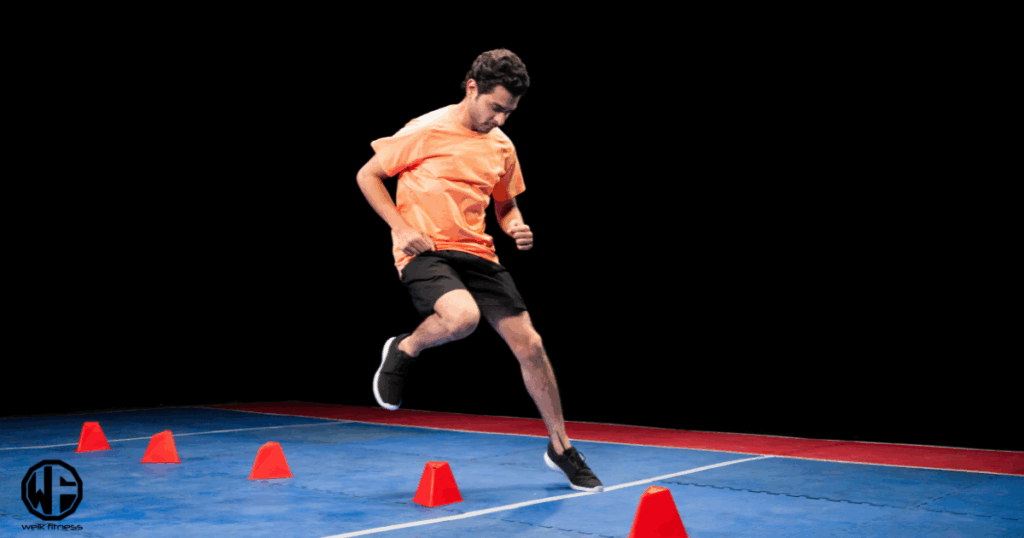
Top players read spin early, snare line drives, and steal bags with great timing. Studying how they work can guide your training plan.
How Do Players Master Split-Second Pitch Recognition?
Hitters have about one-third of a second to read type and speed. Train your eyes to pick up grip, release, and early flight. Those details raise your baseball IQ and confidence.
Regular batting practice builds instinct. Mental training locks your focus on the release point. Tools like reaction lights and programs at Vaughn Sports Academy help develop pitch recognition through repeatable drills.
What Enables Quick Reactions for Fielding?
Sharp vision, tuned focus, and solid fitness drive fast fielding. Visual cues tell your brain which way to move next. Reaction times close to 200 to 250 milliseconds raise your odds on tough balls.
Agility ladders, strobe eyewear, and light cues improve reflexes and tracking. Short sprints keep feet ready for sudden changes. Hydration and omega-3 fats support quick nerve signaling and clean decisions.
How Do Players Succeed in Base Stealing with Fast Reactions?
Fast reactions help you burst as the pitcher moves. A median reaction time near 273 milliseconds can decide safe or out. Quick feet and sharp eyes let you read the move and go before the catcher can act.
Reflex drills and light tools build that first step. Carb fuel and omega-3 fats support brain speed and explosiveness. Hydration keeps signals fast for clean jumps on steal attempts.
Improving Human Reaction Time and Response Time are Key for Baseball Players
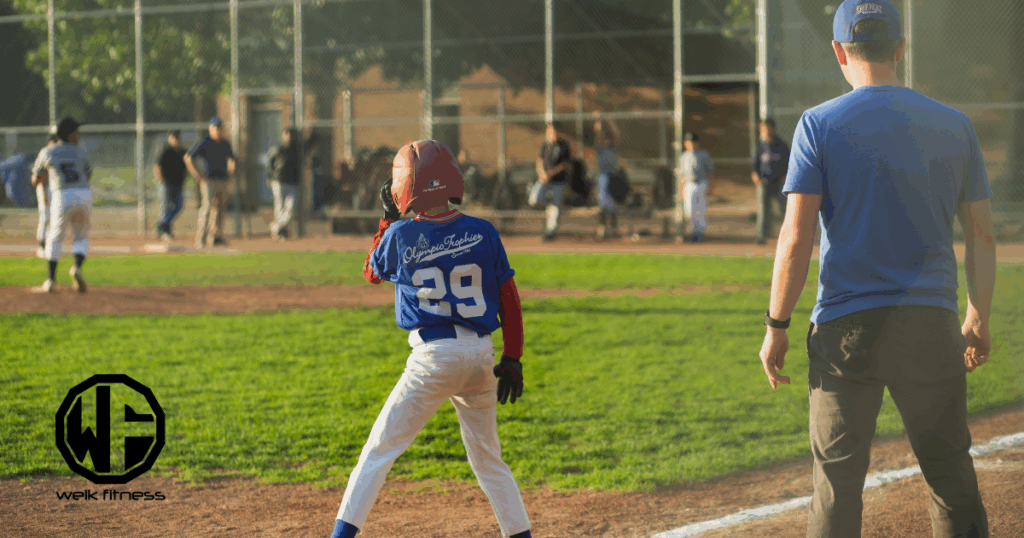
Improved reaction time lifts every skill in baseball. You swing sooner, field tougher balls, and take better jumps. Simple tests and light tools help you measure gains. Aim near the 200 to 250 millisecond range and keep pushing progress.
Hydrate well, eat smart, and train both agility and memory. Mix in video games and hand-eye drills for extra gains. This steady work turns split-second chaos into clear, confident action during games.
Health note: if dizziness, vision problems, or pain appear during training, stop and talk with a qualified coach or medical professional. Smart, safe practice delivers the fastest path to consistent performance.
Reaction Speed & Reaction Time FAQs
Players sharpen reaction time through drills like rapid glove work, soft toss with unpredictable bounces, and split-second decision games. These exercises build neural pathways for faster responses during live play.
Vision training helps athletes track pitches more accurately and pick up subtle cues from pitchers or hitters. Using colored ball drills or focus-shifting routines strengthens eye muscles and improves hand-eye coordination.
Yes, visualization techniques let players mentally rehearse game scenarios before stepping onto the diamond. Controlled breathing keeps nerves steady so minds stay sharp under pressure, leading to swifter decisions at bat or in the field.
Fast reactions allow outfielders to chase down line drives and infielders to snag hard ground balls before they slip by. Hitters who read pitches early make better contact; catchers block wild throws more efficiently too… Every second counts when victory hangs in the balance!
Reaction Speed & Reaction Time References
- https://vaughnsportsacademy.com/beyond-reaction-time-how-baseball-players-can-react/
- https://blog.armcare.com/some-points-on-hydration-to-enhance-baseball-performance/
- https://mpthreebaseball.com/blogs/news/how-youth-baseball-improves-focus-reaction-time-and-athletic-skills
- https://seamsup.com/blog/how-much-does-reaction-time-affect-baseball-performance
- https://www.nsca.com/education/articles/kinetic-select/5-reaction-drills-to-build-quickness/
- https://pmc.ncbi.nlm.nih.gov/articles/PMC6466602/
- https://reflexion.co/blog/reaction-time-in-sports-enhancing-performance-through-cognitive-training/
- https://www.fitlighttraining.com/blogs/news/how-to-use-fitlight-for-reaction-training-in-baseball-and-the-importance-of-vision-training
- https://kineticsmp.com/blog/plyometric-training-for-baseball-players-benefits-best-practices
- https://pmc.ncbi.nlm.nih.gov/articles/PMC9081355/
- https://bobbywoodsbaseball.com/blogs/news/exploring-hand-eye-coordination-and-reaction-times-in-baseball
- https://athleticsweekly.com/aw-promotion/10-ways-how-video-games-can-make-you-a-better-athlete-1039971192/
- https://www.neurotrackerx.com/use-cases/baseball
- https://reflexion.co/blog/baseball-cognition-drills/
- https://appliedvisionbaseball.com/strobe-glasses/
- https://www.blazepod.com/blogs/all/10-must-have-reaction-training-tools-this-year
- https://specialty.vision/article/boost-visual-reaction-time-for-athletes-proven-strategies/
- https://www.bertec.com/blog/how-to-improve-reaction-time-for-peak-athletic-performance
- https://thesportsedu.com/reaction-time-definition/
- https://www.researchgate.net/publication/388194633_Integrating_Technology_in_Baseball_Teaching_Enhancing_Skills_Through_Virtual_Reality
- https://winreality.com/blog/baseball-drills-for-5-6-year-olds/
- https://hittersbaseballacademy.com/baseball-recovery-how-rest-fuels-performance/
- https://www.ewmotiontherapy.com/blog/recovery-baseball-players
- https://www.dominatethediamond.com/blog/How-to-Increase-a-Baseball-Players-Reactions
- https://pubmed.ncbi.nlm.nih.gov/15653298/
- https://mpthreebaseball.com/blogs/news/how-youth-baseball-improves-focus-reaction-time-and-athletic-skills
- https://baseball360.com/en-us/blogs/news/base-stealing-101-how-to-successfully-steal-a-base-in-baseball
